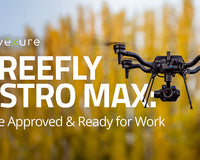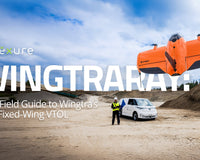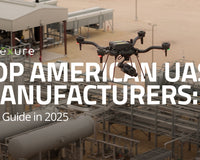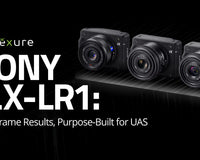Founded in 2014 by two engineering students with a simple premise—centimeter-grade positioning should be easy and affordable—Emlid has grown into a 100-plus-person company headquartered in Budapest, Hungary. Over the past decade Emlid’s Reach product line has expanded from a single DIY module to nine field-ready GNSS receivers, culminating in today’s RS3, RS2+, and RX models.
Emlid’s rising popularity is largely due to its value. An Emlid Reach RS3 lists for about one-quarter to one-third the price of flagship units from long-established brands like Trimble or Leica—yet it delivers comparable multi-band RTK/PPK performance and, uniquely, factory-calibrated IMU tilt compensation. Professionals who once associated “survey-grade” with five-figure budgets now see Emlid as a low-risk path to centimeter accuracy.
Another consideration is ease of use. Every receiver ships with the free Emlid Flow mobile app (field data capture), Flow 360 (cloud project manager), Emlid Studio (PPK processing), and Emlid Caster (NTRIP streaming). Together, these tools let novices hit the ground running while giving power users workflow depth. An active forum of 30k-plus users and rapid firmware releases further shorten the learning curve.
For organizations that need accuracy but can’t justify high price tags, Emlid has become a pragmatic, professional-grade alternative.
What Is a GNSS Receiver?
GNSS 101: The Backbone of Precision Mapping
A GNSS receiver listens to multiple satellite constellations—GPS, GLONASS, Galileo, BeiDou—to solve its position in three-dimensional space. Standard, single-frequency chips (think phones or hobby drones) deliver meter-level accuracy because atmospheric delays, satellite-clock errors, and orbital drift go uncorrected.
Survey-grade units such as the Emlid Reach series add dual-frequency tracking and algorithms like RTK (Real-Time Kinematic), PPK (Post-Processed Kinematic), or PPP (Precise Point Positioning) to strip those errors away and push repeatable accuracy into the 1–2 cm range.
Isn’t the RTK Module on My Drone Enough?
Many modern mapping UAVs ship with onboard RTK. That’s a game-changer for relative accuracy—but a tiny antenna perched on a flying platform faces signal-shadowing from props, intermittent sky view in steep banks, and the hard limit of a short baseline (distance to the base station). In practice you still need either (1) ground checkpoints measured by a high-grade rover or (2) a dedicated base station you control. These safeguards tighten absolute accuracy, provide redundancy if the drone loses its correction link, and let you verify results during QA
Base Station, Network Rover, or Both?
RTK works by comparing the rover’s raw satellite data to a reference receiver (the base) located on a known point. You have two options:
|
Setup |
Why it Works |
Emlid-specific Example |
|
Local Base + Rover |
Remote sites with spotty cellular, long flight baselines, tight vertical specs |
Reach RS3 or RS2+ on a tripod broadcasting LoRa/UHF; second RS3/RS2+ (or your drone) as rover |
|
Network Rover (NTRIP) |
Urban/suburban jobs inside an active CORS/VRS network |
Reach RX or RS3 pulling RTCM3 corrections via LTE/phone |
Do you need a base station for the Emlid RS3? If you have dependable NTRIP coverage within ~50 km, the RS3 can run as a pure rover. In rural areas—or whenever you want full control of your reference coordinates—deploy a second RS3/RS2+ as the base. Either way, the dual-role design means you’re never locked into one workflow
Emlid RS3 vs RS2+ vs RX
Below is a side-by-side comparison of the three current Reach receivers. Let’s explore the raw specs and practical features that survey crews care about.
|
Category |
Reach RS3 |
Reach RS2+ |
Reach RX |
|
MSRP (USD) |
$2,999 |
$2,699 |
$2,199 |
|
Positioning |
RTK / PPK / PPP |
RTK / PPK / PPP |
RTK (network rover) |
|
Tilt Compensation |
IMU-based, 60 ° max; ≈ 20 mm @ 30 ° |
No |
No |
|
Fix Time |
~5s |
~5s |
~5s |
|
Stated Accuracy (RTK) |
H: 7 mm + 1 ppm V: 14 mm + 1 ppm |
H/V identical |
H/V identical |
|
GNSS Bands Tracked |
L1/L2 GPS, QZSS, GLONASS, Galileo, BeiDou |
L1/L2 GPS, QZSS, GLONASS, Galileo, BeiDou |
L1/L2 GPS, QZSS, GLONASS, Galileo, BeiDou |
|
Internal Radios |
LoRa 868/915 MHz (base/rover) UHF 450 MHz* (rover) |
LoRa 868/915 MHz |
— |
|
Cellular Modem |
LTE with fallback |
LTE with dual-diversity antennas |
— (uses phone/tablet data) |
|
Data/BLE/Wired I/O |
Bluetooth, Wi-Fi, RS-232, USB-C |
Bluetooth, Wi-Fi, RS-232, USB-C |
Bluetooth, USB-C |
|
On-board Storage |
16 GB |
16 GB |
— (logs via app) |
|
Battery Life |
22h logging / 16h LTE |
22h logging / 1h LTE |
16h |
|
Weight |
950g |
950g |
250g |
|
Ingress Rating |
IP67 |
IP67 |
IP68 |
|
Operating Temp. |
–4 to +149 °F |
–4 to +149 °F |
–4 to +149 °F |
|
Ideal Use Cases |
Full base/rover set-ups; no-bubble topo & stakeout |
Value-driven full base/rover; long-baseline RTK |
Ultra-portable NTRIP rover for GIS & quick checkpoints |
*RS3’s UHF option (410–470 MHz) is receive-only and requires a TrimTalk 450S-compatible base and a separate UHF whip antenna.

Emlid Reach RS3 — productivity first.
Stakeout and topo points can be shot without leveling the pole, slashing setup time on uneven ground or around obstacles. Add the UHF receiver and RS3 can ingest corrections from legacy 450 MHz networks (Trimble, Topcon) while still broadcasting LoRa to another Reach unit. If you manage mixed-brand fleets—or work where cell data is unreliable—this dual-radio flexibility is a genuine timesaver.

Emlid Reach RS2+ — the proven workhorse.
RS2+ matches RS3 on raw positioning performance but forgoes tilt and UHF to hit a lower price point. Its dual-diversity LTE antenna pair holds a fix farther out on the cellular fringe than the original RS2, making it a savvy choice for rural corridor mapping, agriculture, and mine sites that still have sporadic coverage. For crews that spend equal time as base and rover, the RS2+ offers the best dollar-per-channel value in the Reach lineup.

Emlid Reach RX — pocket precision.
At 250 g and roughly the size of a TV remote, the RX is purpose-built as a network rover: pair it to your phone, select an NTRIP mountpoint, and start collecting. It logs nothing internally (your field app handles that), but what it sacrifices in bells-and-whistles it repays in speed and ergonomics—ideal for utilities, arborists, and landscape architects who need a centimetre-accurate “GPS stick” rather than a full survey kit.
Reach Series Highlights & Software Notes
-
Shared software ecosystem. All three receivers ship with the Emlid Flow mobile app, Flow 360 cloud workspace, Emlid Studio PPK suite, and Emlid Caster NTRIP service. You can mix devices in one project with zero file-format gymnastics.
-
Battery. Each unit uses a LiFePO₄ or Li-ion pack rated for 2,000+ cycles; cold-weather runtimes exceed many higher-priced peers.
-
Rugged builds. RS-series housings blend polycarbonate shells with elastomer bumpers; RX adds full IP68 sealing for submersions up to 1.5 m.
-
Upgradeable firmware. Over-air updates (OTA) arrive several times a year, often adding constellations and new survey tools at no extra cost.
With the technical specs mapped out, the next step is to see how each receiver fits into real-world workflows—from land surveying to drone photogrammetry.
Which Receiver Fits Your Workflow? Industry-Specific Scenarios
1. Land Surveying
On boundary and topo jobs, speed equals margin. A Reach RS3 tripod at the known control point transmits LoRa corrections while a second RS3 on the pole shoots corners and breaklines. IMU tilt means the rod never has to be plumb—critical when you’re straddling fences or rock outcrops—and UHF fallback lets you ingest Trimble-style 450 MHz corrections on municipalities that already run that network. When budgets are tighter and bubble leveling is acceptable, a pair of Reach RS2+ units delivers the same centimeter accuracy for a few hundred dollars less.
Best fit: RS3 for maximum efficiency; RS2+ for pure value.
2. Drone Mapping / Photogrammetry
Place a Reach RS2+ at site center as the base; broadcast LoRa to your RTK-enabled drone (Mavic 3 Enterprise, WingtraOne) and log RINEX for PPK insurance. While the drone flies, walk the site with a Reach RX to capture independent ground-check points—its 250g form factor won’t weigh you down as you plant survey disks. If cellular drops, swap the RX for your spare RS2+ rover and stay productive.
Best fit: RS2+ as base, RX as lightweight checkpoint rover.
3. Construction
Daily as-built checks often happen amid scaffolding, rebar mats, and tight staging areas. A single Reach RS3 rover minimizes setup—stakeout points on slab without leveling, then tilt the pole horizontally to shoot wall face-of-forms. Corrections can come from an on-site RS3/RS2+ base or the contractor’s existing 450 MHz network. Crews already carrying a total station can keep the RS3 in the truck as a rapid-QA tool that exports DXF directly into the BIM workflow via Emlid Flow.
Best fit: RS3 for tilt-driven productivity.
4. Mining & Aggregates
Highwalls, stockpiles, and haul-road benches challenge radio line-of-sight. Deploy a Reach RS2+ on the pit rim; its dual-diversity LTE modem stays locked even when the local tower is ten kilometers away. A second RS2+ (or RS3 if tilt is desired) rides in the light truck for grade stakes and muck-pile measurements. For weekly volumetric drone flights, the base log doubles as PPK ground truth, shaving hours off office corrections. Best fit: RS2+ base/rover pair; add RS3 if tilt near crushers is required.
5. GIS & Utilities
Pole tags, valves, and hand-holes seldom sit in open fields. The pocket-sized Reach RX pairs over Bluetooth to ArcGIS Field Maps or QField; field crews tap to log attributes while holding a tablet in one hand and the RX-topped mini-rod in the other. Because RX relies on NTRIP, supervisors simply give each crew a CORS mount-point and skip base-station logistics. Where cell service fades, swap in a Reach RS3 as a rover pulling LoRa from a roadside RS2+ base.
Best fit: RX for pure network workflows; RS3 as fallback.
6. Public Safety & Forensics
Crash-scene mapping is a race against reopening the roadway. A single-operator kit—Reach RS3 on the rod plus a tripod-mounted RS2+ base—lets investigators capture pavement scars and evidence markers without fussing with bubble levels or metal interference from guardrails. Points export as CSV or DXF into Pix4Dreact or FARO Zone for rapid diagrams. Departments already running drone photogrammetry can reuse the same base, keeping training overhead minimal.
Best fit: RS3 rover + RS2+ base.
Which Emlid Receiver Should You Consider?
All three Emlid Reach units hit the same benchmark: centimeter-grade accuracy with multi-band RTK, PPK, and PPP—and they do it at a fraction of the cost of legacy survey brands. The question isn’t “Can it achieve spec?” but “Which workflow gains you the most efficiency per dollar?”
-
Reach RS3 is the productivity play. Factory-calibrated IMU tilt compensation means you can shoot or stake without leveling the pole—ideal for construction slabs, dense vegetation, or fence-line cadastral work. Add the optional UHF 450 MHz radio and you can mix into older TrimTalk networks while still broadcasting LoRa to another Reach unit. If time on site is billable or your terrain is rarely flat, RS3 pays for itself quickly.
-
Reach RS2+ is a middle-of-the-road workhorse. You keep the same engine, battery, and LoRa range as the RS3 but trade tilt and UHF for a lower MSRP. Dual-diversity LTE antennas boost cell performance at rural pits and farms, making RS2+ a smart base-station anchor—and a capable rover when tilt isn’t mission-critical.
-
Reach RX is pocket precision for NTRIP territories. At 250 g, it lives in a vest pocket and pairs to ArcGIS Field Maps, QField, or Emlid Flow in seconds. For GIS, utilities, and drone checkpoint capture inside a strong CORS network, RX removes the hassle of hauling a full-size receiver.
Whatever your choice, you’ll leverage the same Emlid Flow software suite, free firmware upgrades, and a global user community that speeds troubleshooting. Ready to add centimeter accuracy to your toolkit? Explore the Emlid RS3, RS2+, or RX—or speak with our team about the right bundle for your next project.










